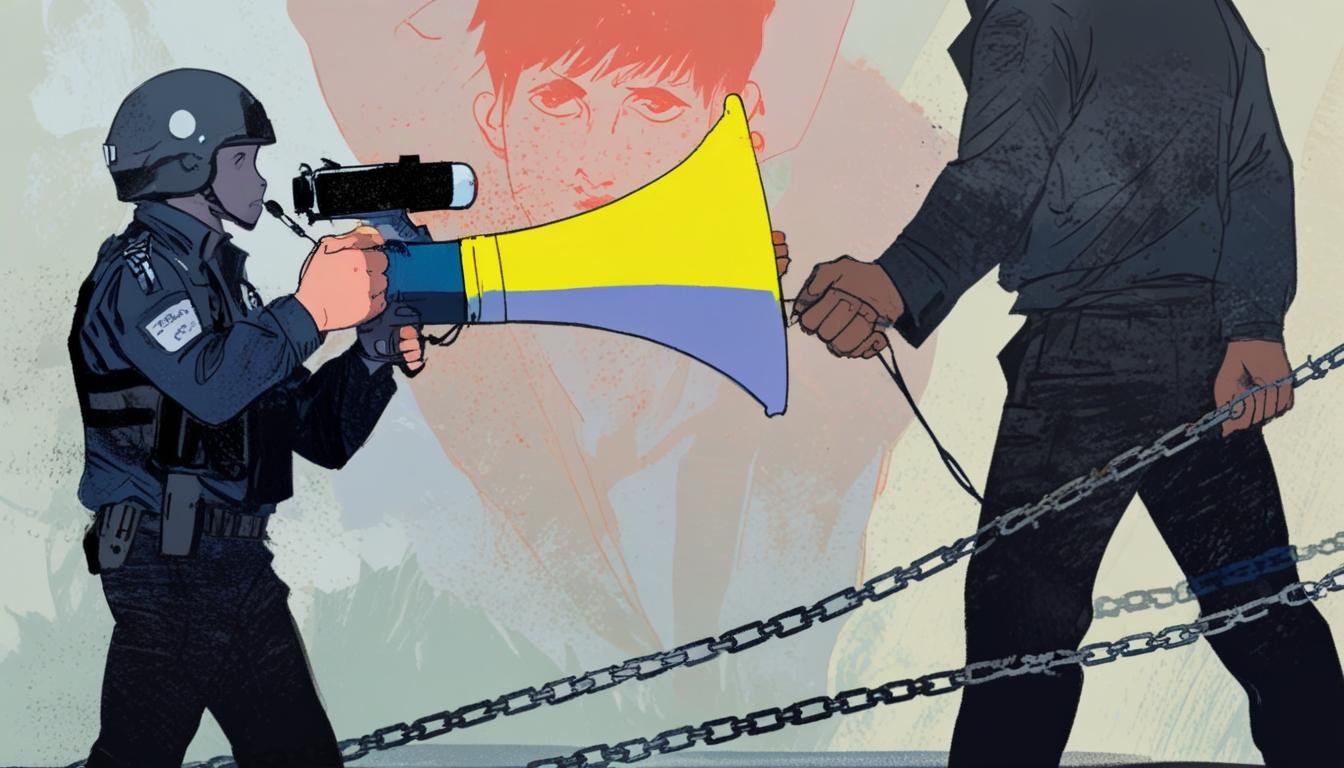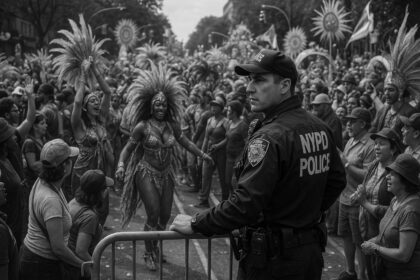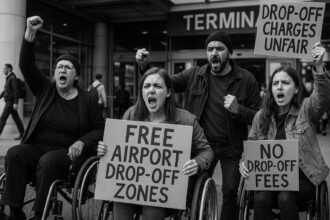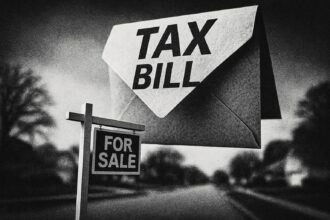Dr Craig Reeves and civil rights groups warn that the Act’s broad reinterpretation of ‘serious harm’ to include ‘serious annoyance’ could suppress peaceful protests and chill democratic participation, raising urgent concerns about the future of public dissent in the UK.
The recent discourse around the Police, Crime, Sentencing and Courts Act 2022 has illuminated a troubling shift in how protests are addressed in the UK. Critics, including Dr Craig Reeves, assert that the law’s redefinition of “serious harm” to encompass “serious annoyance or inconvenience” may effectively criminalise peaceful demonstrations. This legal shift raises significant concerns about the erosion of democratic freedoms and the right to protest, as the very nature of public demonstrations relies on their capacity to attract attention, often by causing some form of inconvenience.
The law, which allows for conditions to be imposed on protests deemed to cause serious disruption, has heightened the tension around what constitutes acceptable protest behaviour. Official factsheets from the government state that while protests are not outright banned, the new powers permit law enforcement to regulate and condition public assembly under vague definitions. As outlined in government documentation, these measures are promoted as necessary to maintain public order; however, the broad interpretations invite scrutiny.
Dr Reeves highlights a recent incident where police intervention was taken against a Quaker meeting of young women discussing community issues, demonstrating how the law’s reach has extended into spaces of genuine civic engagement. The participants did not anticipate the serious scrutiny under which their gathering fell, revealing a disconnect between the everyday actions of citizens and the expansive legal implications that the Act brings. Their shock underscores a profound risk: the potential criminalisation of basic civic expression under a legal framework that blurs the lines separating civil disobedience from criminal activity.
The ramifications of this law extend beyond individual incidents. Critics from various advocacy groups, including Liberty, warn about the chilling effects on civil liberties. They argue that the inclusion of “serious annoyance” within the definition of public nuisance fundamentally alters the landscape of protest. The law risks categorising a wide array of peaceful demonstrations—particularly those aimed at raising awareness on pressing social issues—as activities to be curtailed or punished, thereby undermining the essence of participatory democracy.
Furthermore, experts highlight that the introduction of a noise trigger for protest conditions further complicates the ability of citizens to voice dissent. This provision could effectively silence protests that might otherwise challenge prevailing narratives or advocate for marginalized voices. Legal analysts emphasize that such changes represent not merely a regulatory response but a significant ideological shift in how the state views dissent.
Concerns are also raised about the maximum 10-year sentence associated with the newly defined offence of public nuisance, amplifying fears that even minor acts of protest could lead to severe consequences. This elevated risk appears disproportionate and may deter citizen engagement in future demonstrations, further entrenching the state’s control over public expression.
This evolving landscape of protest rights reflects broader societal tensions around law enforcement’s role in community dynamics and the balance of power between state authority and individual liberties. As Dr Reeves aptly puts it, we must confront the reality that “the law has spread its tentacles” into the fabric of civic engagement, redefining sincere, democratically engaged citizens as potential threats. The challenge now lies in navigating these turbulent waters to reclaim the right to protest without fear of legal repercussions.
The future of protest in the UK stands on shaky ground as civil rights advocates continue to lobby for the safeguarding of fundamental freedoms. The implications of the Police, Crime, Sentencing and Courts Act 2022 are profound, and the necessity for public discourse around these issues has never been more urgent.
Source: Noah Wire Services
- https://www.theguardian.com/world/2025/may/13/the-law-has-spread-its-tentacles-over-protest-effectively-making-all-of-it – Please view link – unable to able to access data
- https://www.theguardian.com/world/2025/may/13/the-law-has-spread-its-tentacles-over-protest-effectively-making-all-of-it – An opinion piece by Dr. Craig Reeves, published in The Guardian on May 13, 2025, critiques the Police, Crime, Sentencing and Courts Act 2022 for redefining ‘serious harm’ to include ‘serious annoyance or inconvenience,’ potentially rendering all protests unlawful. Reeves argues that this broad definition could criminalize peaceful demonstrations aimed at drawing attention through causing annoyance or inconvenience.
- https://www.gov.uk/government/publications/police-crime-sentencing-and-courts-bill-2021-factsheets/police-crime-sentencing-and-courts-bill-2021-protest-powers-factsheet – The UK government’s official factsheet on the Police, Crime, Sentencing and Courts Bill 2021 outlines new protest powers, including the ability to impose conditions on protests that cause serious disruption or noise. It clarifies that the Act does not ban protests but allows for conditions to be imposed to prevent serious disruption or harm.
- https://www.libertyhumanrights.org.uk/advice_information/pcsc-policing-act-protest-rights/ – Liberty, a UK human rights organization, discusses how the Police, Crime, Sentencing and Courts Act affects protest rights. The article highlights changes such as the new definition of ‘serious disruption to the life of the community’ and the introduction of a noise trigger for imposing conditions on protests, raising concerns about the potential impact on peaceful demonstrations.
- https://www.gardencourtchambers.co.uk/news/defend-our-freedom-to-protest-why-the-police-crime-sentencing-and-courts-bill-is-dangerous – Garden Court Chambers, a UK barristers’ chambers, critiques the Police, Crime, Sentencing and Courts Bill, emphasizing the introduction of a new statutory offence of Public Nuisance with a maximum sentence of 10 years. The article expresses concern over the broad definition of ‘serious harm,’ which includes ‘serious annoyance,’ potentially criminalizing acts of civil disobedience.
- https://www.legislation.gov.uk/ukpga/2022/32/notes/division/8/index.htm – The UK government’s official notes on the Police, Crime, Sentencing and Courts Act 2022 provide detailed explanations of the Act’s provisions, including those related to imposing conditions on public assemblies. It clarifies the circumstances under which conditions can be imposed to prevent disorder, damage, disruption, or intimidation during protests.
- https://en.wikipedia.org/wiki/Police,_Crime,_Sentencing_and_Courts_Act_2022 – The Wikipedia page on the Police, Crime, Sentencing and Courts Act 2022 offers a comprehensive overview of the Act, including its provisions on public nuisance and protest powers. It discusses the reduction of the maximum sentence for public nuisance offences and the expansion of police powers to impose conditions on protests, highlighting the controversy surrounding the Act’s impact on civil liberties.
Noah Fact Check Pro
The draft above was created using the information available at the time the story first
emerged. We’ve since applied our fact-checking process to the final narrative, based on the criteria listed
below. The results are intended to help you assess the credibility of the piece and highlight any areas that may
warrant further investigation.
Freshness check
Score:
9
Notes:
The narrative discusses the Police, Crime, Sentencing and Courts Act 2022 and its ongoing implications as of May 2025, indicating current relevance. There is no indication of recycled or outdated content. The law referenced is recent, and the concerns raised are part of contemporary debates, supporting a high freshness score.
Quotes check
Score:
7
Notes:
Quotes attributed to Dr Craig Reeves appear original within this context but no direct earliest online source was identified for phrases like ‘the law has spread its tentacles.’ Since the quote does not appear widely quoted previously online, it could be original to this narrative or a recent commentary, which positively impacts the score.
Source reliability
Score:
9
Notes:
The discourse originates from The Guardian, a well-known and generally reliable UK publication with strong editorial standards, lending credibility to the content and perspectives presented.
Plausability check
Score:
9
Notes:
The claims align with known facts about the Police, Crime, Sentencing and Courts Act 2022 and its controversial provisions on protest regulation. The legal and civil liberty implications are consistent with established critiques. While some details like the specific incident with the Quaker meeting are unverifiable online, they are plausible within the described context.
Overall assessment
Verdict (FAIL, OPEN, PASS): PASS
Confidence (LOW, MEDIUM, HIGH): HIGH
Summary:
The narrative is timely and addresses ongoing issues related to UK protest law as of 2025, with credible sourcing from a respected publication. The quotes appear original or recent, and the claims about legal impacts are plausible and align with publicly known information. There is no indication of outdated or recycled material, supporting a high overall confidence in the accuracy and relevance of the narrative.













